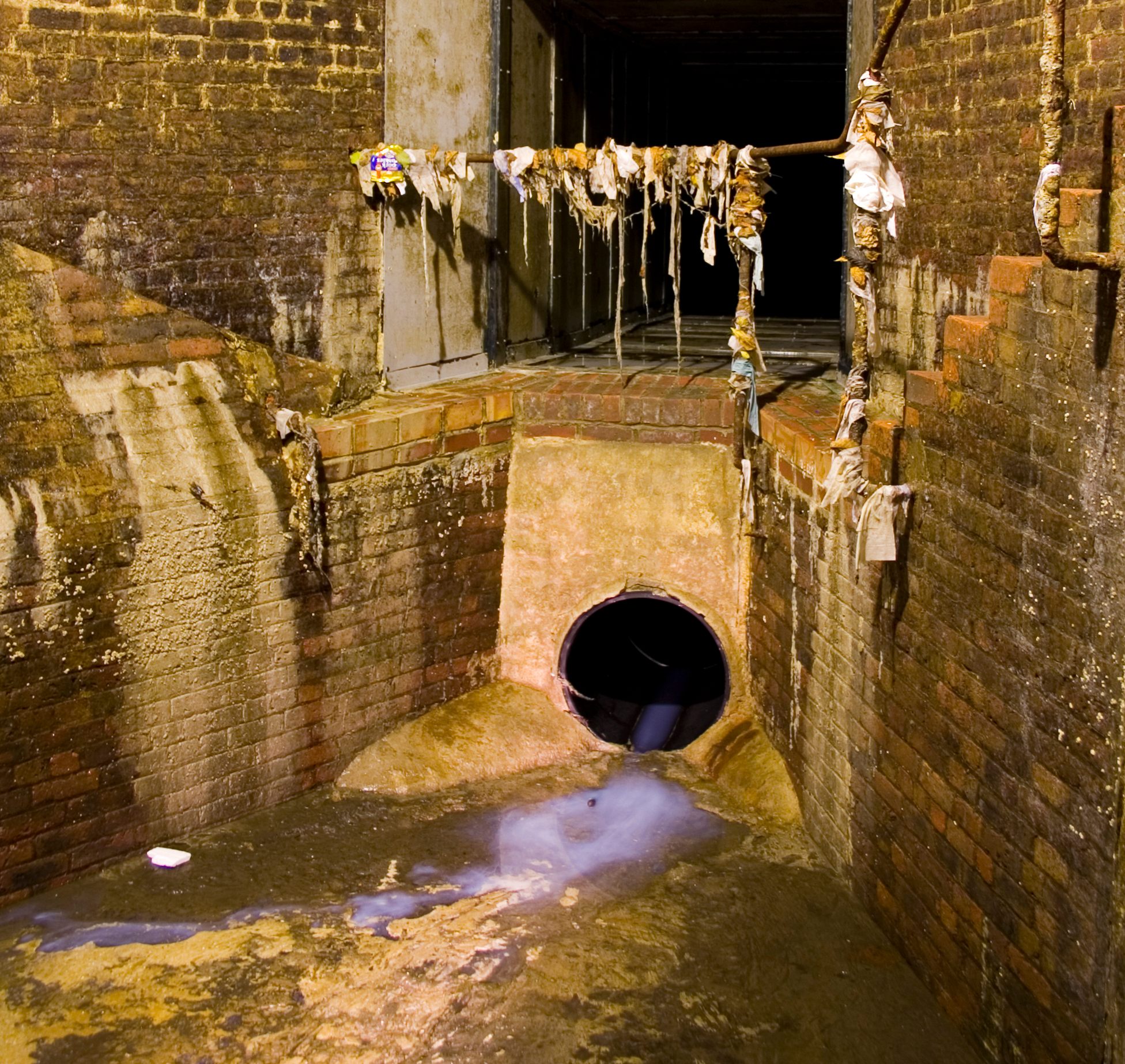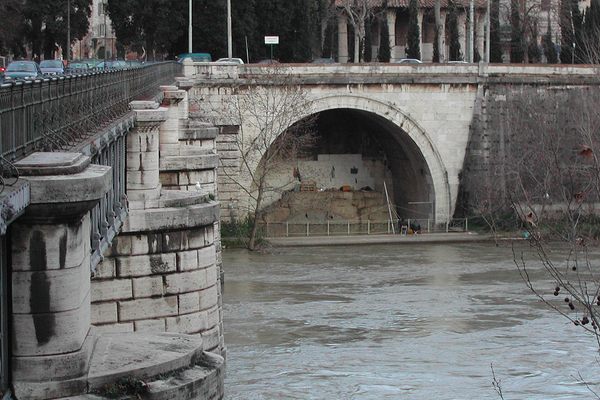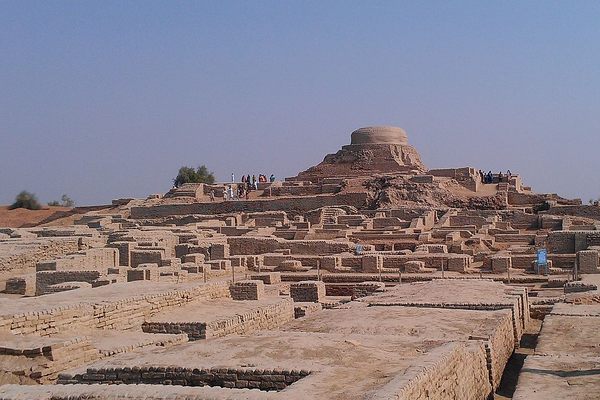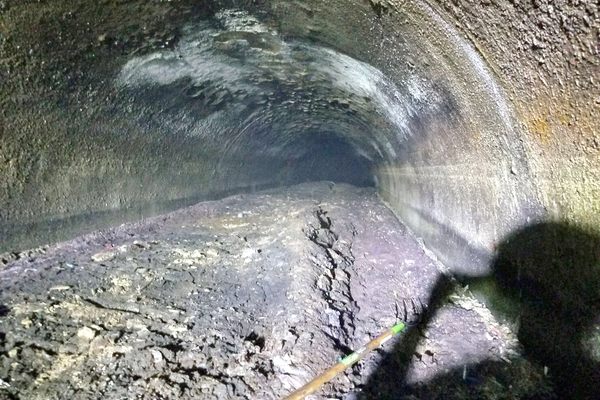Modern Cities Owe Their Cleanliness to These Innovative Old Sewers
Crucial advances in where we put our poop, throughout history.

Efficient sewer systems have long been a touchstone of modernity, differentiating a primitive settlement from a planned and sophisticated town or city. When studying the remains of ancient civilizations that flourished centuries ago, we are regularly amazed by their innovative systems for disposing of human waste.
The earliest and easiest form of disposal was to channel waste into the nearest body of water. This process was improved by the first clay drainage pipe, used in Babylonia as early as 4000 BC. The Mesopotamians also had cesspools of various sizes, a few of which were connected to a central system. There is even evidence of complex toilets and drains in ancient archaeological sites all around the world, including in Scotland, Pakistan, Rome, and Egypt.
After this promising start, sewer design evolved across centuries to meet the needs of growing populations, and to battle health hazards that came about due to poor disposal practices. London, for instance, faced a huge, smelly problem in 1858 dubbed the “Great Stink,” which was the result of mounting levels of untreated waste in the Thames and on the river banks. The Stink was eventually solved by a civil engineer who suggested a pattern of interconnected tunnels with outfalls outside the city limits, a system the city still uses.
Taking the long view of the history of human civilization, consider the importance of six places below, where remarkable innovations led to the modern-day sewers and sanitation systems we enjoy today.

Neolithic Toilets of Skara Brae
Sandwick, Scotland
This small Neolithic settlement on the coast of Scotland is known for being one of the best-preserved in Europe. It was also likely an extremely clean village. Some of the earliest-known toilets and sewer systems have been found at this site, which was inhabited between 3100 and 2500 BC. Residents would have had lavatory-like plumbing systems fitted into the walls of their huts.
Deep tunnels, lined with tree bark to make them watertight, carried water from the roof and waste liquids from the connected huts to the ocean nearby. Given the depth of the tunnels, it’s believed that they were constructed before the structures aboveground, making this a very well-planned settlement. Considerable time and resources must have been used to build something as modern as an individual lavatory for each dwelling, an indication of the importance of personal hygiene within this ancient tribe.

Ancient City of Mohenjo-Daro
Moenjo-daro, Pakistan
The people of the Indus Valley in southeast Asia were also sticklers for cleanliness, as evidenced in the ruins of cities such as Mohenjo-Daro. Built around 2500 BC, it was one of the biggest cities of a sprawling settlement that was concentrated in the northwest of India and parts of Pakistan. It is one of the world’s earliest urban settlements, and home to the iconic Great Bath, an ancient public pool.
Residents of Mohenjo-Daro who preferred a more private spot for their ablutions had the option of bathing in washrooms in their own houses, located next to latrines on the street side. Some houses even had a second-floor washroom, as indicated by the remains of terracotta pipes and vents.
Many dwellings were part of a centralized sewerage system, and in the ones isolated from this network, people made use of soak pits and jars to clean up after themselves. The water and waste gathered from both these individual homes and from public facilities ran through covered drains made of baked bricks, reaching the nearby river after passing through screens made of wood.
Centralized sewage systems were also found in Harappa and Lothal. The Indus Valley had the advantage of being located next to a number of rivers, making sewage disposal easier. The Romans, too, found this useful when they attempted to construct a drainage system.

Cloaca Maxima: Rome’s “Greatest Sewer”
Rome, Italy
In the 6th century BC, the Romans were so pleased with the new sewer system they’d built, they named it Cloaca Maxima, or “Greatest Sewer.” Originally used to drain the marshlands to make way for the building of the Roman Forum, it was later expanded to carry waste from public baths and latrines. Roughly 11 aqueducts were linked to this system, which carried material from the city center to an outfall near the Ponte Rotto bridge.
As it turns out, the Romans’ pride in their creation was justified. The philosopher Pliny the Elder, writing 700 years after the system’s construction, was amazed by the sturdiness of the sewers. “Sometimes water from the Tiber flows backwards and makes its way up the sewers. Then the powerful flood-waters clash head-on in the confined space, but the unyielding structure holds firm,” he wrote.
Though it’s in a more fragile state today than during Pliny’s time, it is still in use, and a small stream can be seen trickling along the outfall.

Crossness Pumping Station
London, England
One of the problems the residents of Rome faced as a result of the Cloaca Maxima was a foul odor wafting through the structures it connected, due to a lack of sufficient vents. Londoners living near the Thames in 1858 also knew a thing or two about odor issues. The “Great Stink” that attacked the city during a particularly hot summer that year was caused by dumping untreated waste in the river’s waters and on its banks. The civil engineer Joseph Bazalgette turned the situation around with his plan to revamp the city’s sanitation network.
Bazalgette came up with a new design wherein interconnected tunnels transferred the city’s sewage to outfalls outside city limits. He also ordered the construction of sewage pumping stations to aid in the process. One of these was the Crossness Station in Bexley.
Finished in 1865, the station used four massive steam pumps to flush non-solid waste into the river at specific times, to get it out to sea much more quickly. Solid waste was put on barges and floated straight out to sea. The interior of the station was decorated in massive amounts of elaborate ironwork, giving the otherwise vile industrial site a delicately Victorian feel and earning it the nickname, “The Cathedral on the Marsh.”
The pumps, named “Victoria,” “Prince Consort,” “Albert Edward,” and “Alexandra,” respectively, were upgraded a number of times over the decades, until the site was finally decommissioned and abandoned in the 1950s. Today the site is listed as a historic building.

Brighton’s Victorian Sewers
Brighton, England
For the denizens of London, the coastal town of Brighton was an easy getaway, and in the mid-19th century, when its waters were touted to have medicinal properties, its popularity spiked—along with the local sewage levels.
Brighton’s coastal cottages were built on porous chalk, and eventually the raw sewage in crude sewage pits began to seep through the walls of houses during the rainy season. In the 1860s, public pressure to improve the inadequate systems mounted.
In 1874, Sir John Hawkshaw designed a seven-mile, brick-lined sewer to transport Brighton’s sewage to Portobello on the Telscombe Cliffs. Relying solely on manual labour, they built a sewer system that still serves Brighton to this day, and is a fascinating example of Victorian ingenuity.

Sewer Balls of Paris
Paris, France
Across the ocean, in neighboring France, the Parisians too came up with an innovative solution to keep their sewers working efficiently. In the 1850s, the engineer Eugene Belgrand attempted to modernize and bring uniformity to Paris’s underground sewage network. But despite these efforts, complete uniformity was not achieved and blockages became a problem in some tunnels. The solution? Sewer balls.
Wooden and iron balls of sizes suitable for the specific tunnel were given a push and bowled through the sludge. This innovation was displayed at the Exposition Universelle of 1878, the third Paris World’s Fair, and received glowing reviews in the press at the time. Today, these balls are on display at the Paris Sewer Museum, along with various other aspects of the city’s subterranean waste disposal network. They are still used to tackle particularly stubborn sludge.




















Follow us on Twitter to get the latest on the world's hidden wonders.
Like us on Facebook to get the latest on the world's hidden wonders.
Follow us on Twitter Like us on Facebook